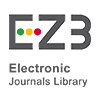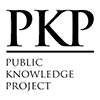The Analysis of the Holy Defense Novels According to Bakhtin Considering "Noah Homiletic Sermon" and "Once Upon a War"
Abstract
Polyphony theory was proposed by Mikhail Bakhtin (1895-1978), a critic, philosopher, and Russian theorist in the 20th century. He borrowed this theory from music field and used it for the analysis of Dostoyevsky and Rabelais's stories. According to him, polyphony means equal distribution of phones in a text. He believes that polyphony lets the story characters leave the author's viewpoint and creates conversation and on the basis of mixture of different phones, presents a new theory. In this study, it is tried to analyze speech systems of "Noah homiletic sermon" by Mahmoodi and "Once upon a war" by Gheysari using polyphony and monophony approaches of Bakhtin and the significance of this study is answering to this question that to what extent these books were able to benefit speech systems and Bakhtin theory.This research shows that polyphony in "Noah homiletic sermon" by Mahmoodi is used on the basis of Bakhtin theory and each personality has a special language and ideology which is common in face but actually they are different. This novel possess a particular position because of happening in a place with special geography which is Diyar-e- noon and the sensitivity of that period when the story is being narrated. But "Once upon a war" couldn’t benefit from polyphony so actions of the story have been finished by monophony.
Keywords
Full Text:
PDFReferences
Ahmadi, B. (2005). Text construction and interpretation. 7th edition. Tehran: Markaz publication.
Bakhtin, M. (2017). Problems of Dostoevsky's poetics. Translated by Moradiyani Nasrollah. First edition. Tehran: Hekmat-e-kalame publication.
Bakhtin, M. (2012). Dialogue imagination, queries about novel. Translated by Poorazar Roya. Third edition. Tehran: Nei publication.
Todorov, T. (2012). Bakhtin conversation logic. Translated by Karimi Dariush. Second edition. Tehran: Markaz publication.
Bahramiyan, A. et.al. (2001). "comparing Bakhtin polyphony manifeststion in these plays: Long story, King the son of king, To the foreign country seen by suspecting man, and author's books by Abootorab Khosravi". Fine arts and music and dramatic arts journal. No.44. pp:13-73.
Payande, H. (2015). Novel unfolding. Third edition. Tehran: Morvarid publication.
Parsinejad, K. (2005). Once there was a war, there was a story. Tehran: Sarir publication.
Culler, J. (2006). Literary theory.Translated by Taheri Farzane.Second edition.Tehran:Markaz publication.
-----------. (2003). Fundamental theory. Translated by Taheri Farzane. Tehran: Karkaz publication.
Kahnooei,P. (2004).Polyphony in the stories. Foreign languages research journal. No. 16. Spring.Pp: 5-16.
Makaryk. I. (2006). Encyclopedia of contemporary literary theories. Translated by Mohajer Mehran and Nabavi Mohammad. Second edition. Tehran: Agah publication.
Namvarmotlagh, B. (2008). Bakhtin, conversation and polyphony of Bakhtin study. Humanities Research Center Journal. No. 57. Pp: 397-414.
DOI: http://dx.doi.org/10.18415/ijmmu.v12i2.6687
Refbacks
- There are currently no refbacks.
Copyright (c) 2025 International Journal of Multicultural and Multireligious Understanding

This work is licensed under a Creative Commons Attribution-NonCommercial-NoDerivatives 4.0 International License.
https://ijmmu.com
editor@ijmmu.com
facebook.com/ijmmu
Copyright © 2014-2018 IJMMU. All rights reserved.



































